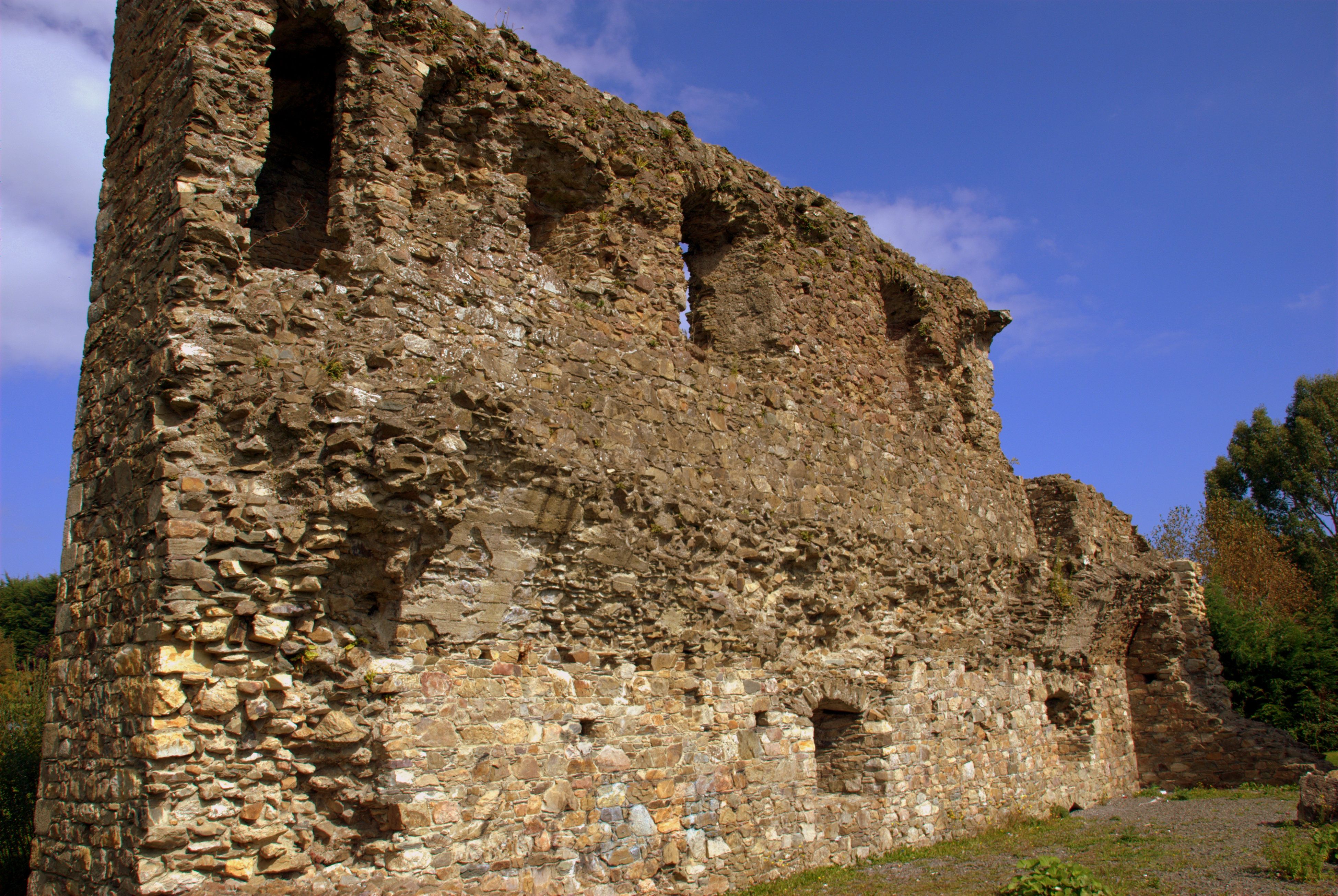Kindlestown Castle on:
[Wikipedia]
[Google]
[Amazon]

 Kindlestown Castle is a
Kindlestown Castle is a

 Kindlestown Castle is a
Kindlestown Castle is a castle
A castle is a type of fortified structure built during the Middle Ages predominantly by the nobility or royalty and by military orders. Scholars debate the scope of the word ''castle'', but usually consider it to be the private fortified r ...
and a National Monument
A national monument is a monument constructed in order to commemorate something of importance to national heritage, such as a country's founding, independence, war, or the life and death of a historical figure.
The term may also refer to a spec ...
in Delgany, Ireland.
Location
Kindlestown Castle is located astride the slopes of Kindlestown Hill, to the north of Delgany, west of Greystones railway station, and near the Dromont housing development.History
Kindlestown Castle is a late stone example of thehall house
The hall house is a type of vernacular house traditional in many parts of England, Wales, Ireland and lowland Scotland, as well as northern Europe, during the Middle Ages, centring on a hall. Usually timber-framed, some high status examples wer ...
, commanding a good view of the countryside and the Irish Sea. The castle takes its name from its association with Albert de Kenley ( Sheriff of Kildare in 1301), who is believed to have erected it in the late 13th century. Others give it an earlier date of 1225, associating it with Walter de Bendeville.
De Kenley married Joan, the widow of Ralph Mac Giolla Mocholmág (Sir Ralph Fitzdermot) in 1292 and had custody of his lands for his stepson, John Fitzdermot. He retained some of the land for himself as can be seen from a deed dated 1304, and may have built the castle to protect against attack from the native Irish. In 1301 the Uí Broin (O'Byrnes) burned down nearby Rathdown Castle; the occupants may have taken refuge at Kindlestown. But John Fitzdermot had not the stomach for the fight with the Irish, conveying the manor of Rathdown about 1305 to Nigel le Brun, Escheator of Ireland. In 1377 the Uí Broin took Kindlestown itself. It was recovered by Robert Wikeford, Lord Chancellor of Ireland
The Lord High Chancellor of Ireland (commonly known as Lord Chancellor of Ireland) was the highest judicial office in Ireland until the establishment of the Irish Free State in 1922. From 1721 to 1801, it was also the highest political office of ...
, and it later passed into the possession of the Archbold family.
Around 1402 there was another attempt by the O'Byrnes to take over, but Donnacha O'Byrne was defeated by the Archbolds. Kindlestown Castle flourished during this time and we know from the Inquisitions of James I that in 1621 it was surrounded by of land and had a water mill.
The Archbolds fell into debt and Edward Archbold sold Kindlestown to William Brabazon, 1st Earl of Meath in 1630.
Building
The castle, also called ahall house
The hall house is a type of vernacular house traditional in many parts of England, Wales, Ireland and lowland Scotland, as well as northern Europe, during the Middle Ages, centring on a hall. Usually timber-framed, some high status examples wer ...
, measures externally by and is in height, with walls thick. The northern wall and part of the eastern wall survive intact to parapet level, but the southern and western walls were demolished in the post-medieval period. The surviving castle, two storeys high, is built of rough limestone, and the main features consist of a small projecting tower in the north-west corner, an original barrel vault
A barrel vault, also known as a tunnel vault, wagon vault or wagonhead vault, is an architectural element formed by the extrusion of a single curve (or pair of curves, in the case of a pointed barrel vault) along a given distance. The curves are ...
at ground-floor level, and an entrance (at ground-floor level) and mural staircase in the eastern wall. The windows are small defensive arrowslits in the exterior, widening into segmental-arched embrasures in the interior. Window-seats survive at first-floor level. The remains of a slated parapet and stone string-course
A course is a layer of the same unit running horizontally in a wall. It can also be defined as a continuous row of any masonry unit such as bricks, concrete masonry units (CMU), stone, shingles, tiles, etc.
Coursed masonry construction arranges ...
are also visible in the front façade.
References
National Monuments in County Wicklow Castles in County Wicklow {{Ireland-castle-stub